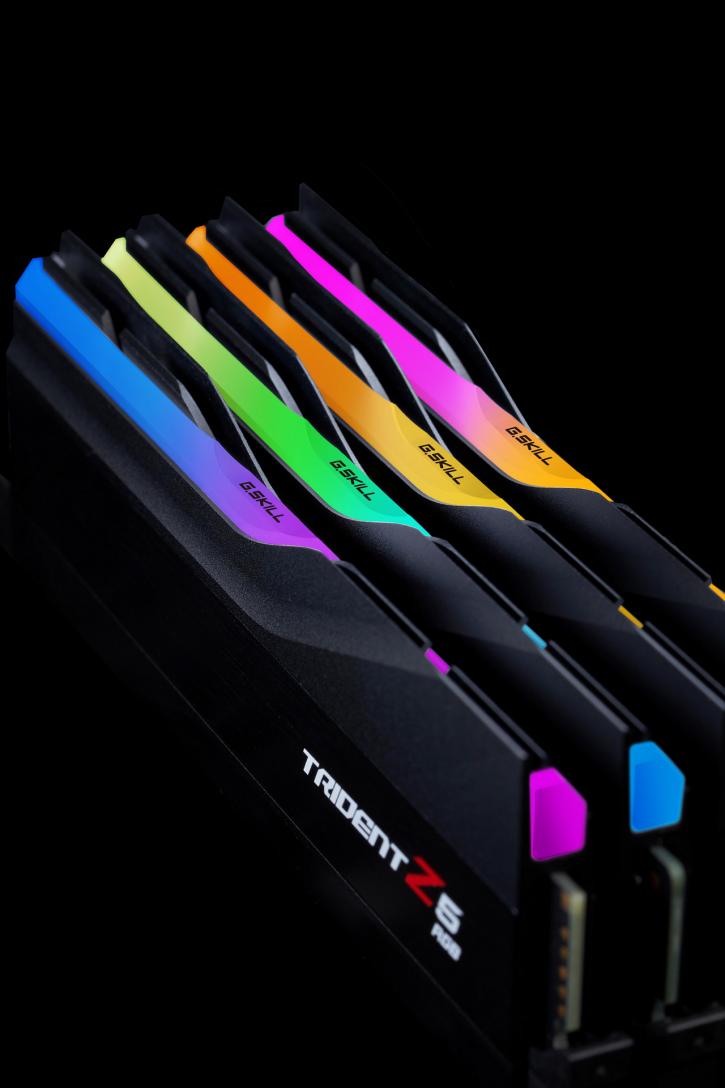Introduction
G.Skill Trident Z5 7200 CL34 DDR5 7200 MHz CL34 32 GB (2x 16 GB)
G.Skill, a Taipei-based company, is a household name in the tech industry. They have established a reputation for producing high-quality DDR memory, but they also offer a diverse range of products including AIOs such as the Enki 360, stylish chassis like the Z5i, sleek keyboards like the KM360, and various other peripherals. However, their crown jewel is the DDR5 RAM, of which the Trident Z5 RGB series is a prime example. With frequencies reaching up to 8000 MHz, this series stands as the top tier in G.Skill's offerings.
A quick reminder - DDR5 is the newest technology to hit the market, make headlines, and break world records. DDR5 already set spectacular results in overclocking (of course, using the LN2), as even 10550 MHz. DDR4 RAMs operate on a single 64-bit bus, while DDR5 has two 32-bit buses (plus, in both cases, an additional 8-bit for ECC). As a result, a single module is identified as Dual Channel, while two are identified as Quad Channel. However, the solution itself does not match the throughput of HEDT platforms with processors with a four-channel controller. The internal (A / B) channels of DDR5 RAM also share the RCD (Register Clock Driver), which provides more output signals and more extended pulse reading (8 vs. 16). The DDR5 comes with a Power Management Integrated Circuit (PMIC) from the most important things you need to know. It’s responsible for controlling voltage changes, optimizing the energy draw, and making it less demanding for the motherboard controller. The DDR4 nominal voltage is 1.2 V; for the DDR5, it’s 1.1 V. Typical XMP voltage for the older type of memory is 1.35V (sometimes 1.45 V); now, it’s mostly 1.25 V. Speaking of the XMP, till now, it was 2.0 revision, with the introduction of the DDR5 we’ve got the rev 3.0. The main difference is that the number of profiles has increased from three to five (three for the manufacturer settings and two placeholders for the users).
After this short introduction – let’s present a bit of the review sample. There are two colour variants:
Our sample is not the highest frequency kit (still, from the upper end of the scale) from the Trident Z5 RGB series, with a 7200 MHz clock, CL34-45-45-15, at 1.4V. The range is from 5200 to 8000 MHz (but that’s very picky with the motherboards). There’s also a Trident Z5 without the RGB lighting on offer (but with a narrower selection of the frequencies). Overall, the G.Skill TridentZ 5 RGB DDR5 memory kit is an impressive option for those looking for high-performance memory with low latency and stunning RGB lighting.
The RGB can be controlled via the following:
- Asus Aura Sync
- Asrock Polychrome RGB
- Gigabyte RGB Fusion 2.0
- MSI Mystic Light Sync
It’s a series with an XMP profile. For the AMD AM5 platform, the following ones are available:
The height of the memory module is 43 mm, so it’s a relatively low-profile form, which should cause rare problems with the (air) CPU coolers. As for compatibility – there’s a Z790 (and B760 for Asus) chipset for the Intel kits.
The series is equipped with RGB, so the LED enjoyers should be happy (still – there’s a variant without the lighting). We’ll check the kit only on two platforms this time, with Z790-based motherboards (Asus Z790 Maximus Hero) combined with the Intel Core i9 13900K and the Asrock X670E Steel Legend combined with an AMD Ryzen 9 7900X. This time around, the used GPU is the Nvidia Geforce RTX 4090, so it shouldn’t be a limiting factor for the memory performance. We are traditionally going to try and squeeze something more out of it, so the standard 7200 MHz probably is not the last word here (or at least we might manage to fine-tune the latencies), at least on the Intel platform. You can always stay on the safe side and stick to the advertised frequency and latencies using XMP 3.0. The default parameters look great, and so are the visual aspects – we need to check the performance then. A limited lifetime warranty backs the Trident Z5 RGB series.
Ok, next page, please.






